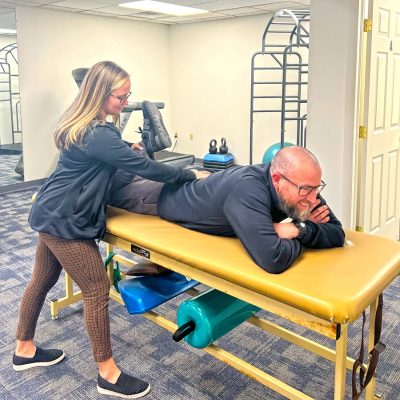 Hip mobility is an often overlooked component of lower back pain.
Hip mobility is an often overlooked component of lower back pain.
Low back pain is one of the most common reasons people seek medical attention, and the number one reason people seek help from a Physical Therapist.
The percentage of adults with back pain increases with age. According to the National Center for Health Statistics 28.4% of Americans age 18-29, 35.2% age 30-44, 44.3% for those aged 45-64 and 45.6% for those aged 65 and over experience back pain.
Women at 40.6% were more likely to experience back pain than men at 37.2%. There are many contributing factors to lower back pain, from sedentary lifestyle to muscle imbalances.
Whether it be from tightness, weakness, or most often a combination of the two including poor hip mobility. Hip mobility refers to both range of motion and control of that motion, which could be defined as strength through your available range.
It is important to have proper range of motion through your hip joints, as well as good control and balance. We move in three planes sagittal, frontal, and transverse, which is our front to back, side to side and rotational movements.
All of our joints move in these three planes, and lack of movement or control of movement in any of these planes can cause issues including low back pain.
One muscle group in particular that is responsible for motion in all three of these planes are the hip flexors.
When hip flexors lack functional mobility they can limit back extension in the sagittal plane, lateral pelvic motion in both directions of the frontal plane and will limit hip internal rotation causing excessive rotational force through the spine.
At Capstone Physical Therapy hip assessment and treatment are incorporated in most patients’ plans especially with patients who have back pain.
PHOTO CAP: Jackie performing passive hip flexor stretch on table.